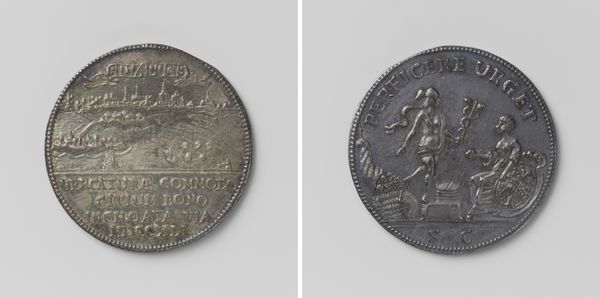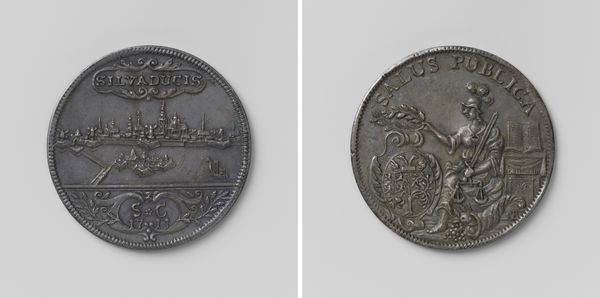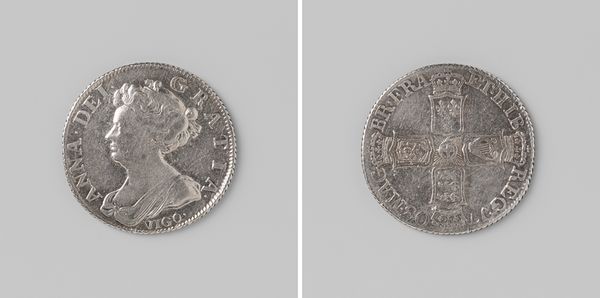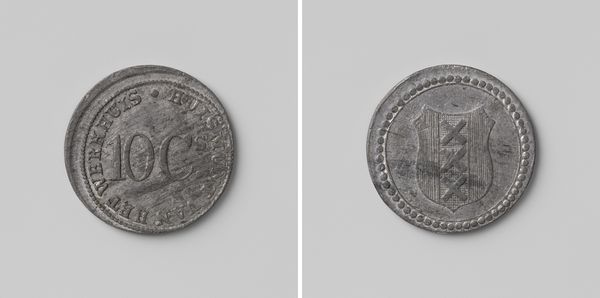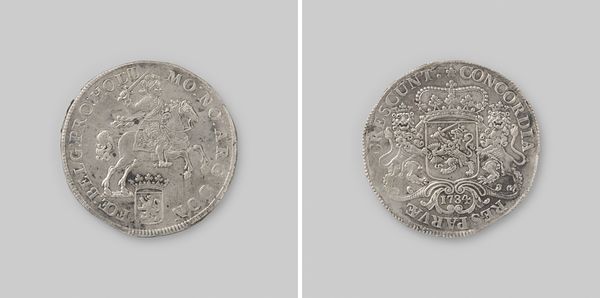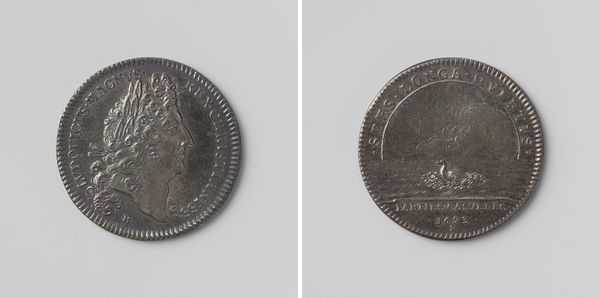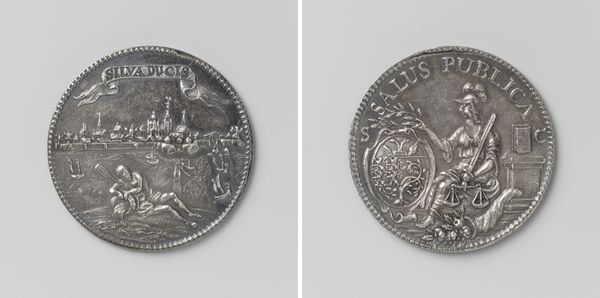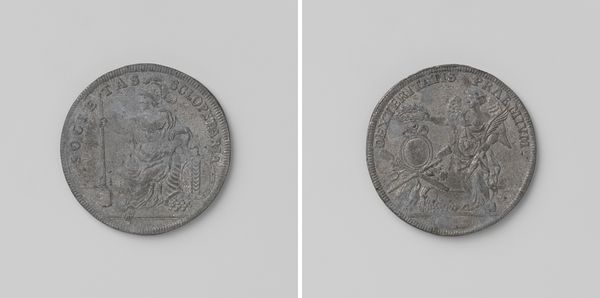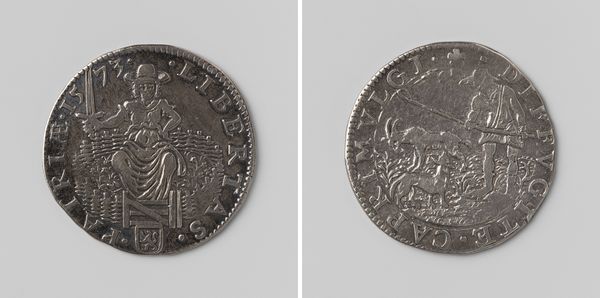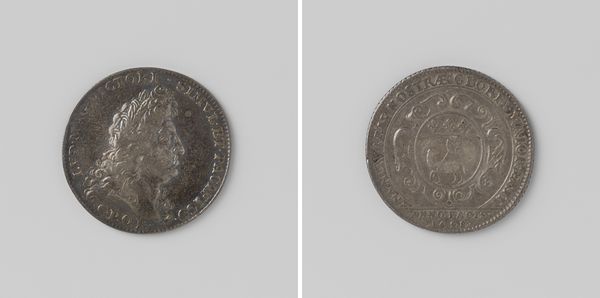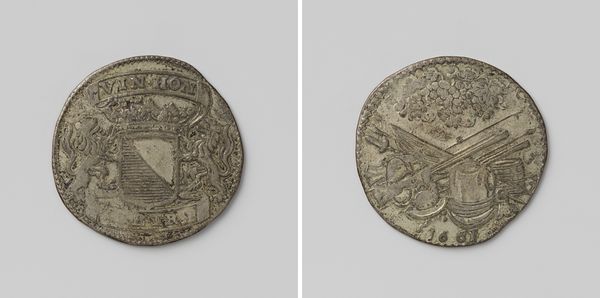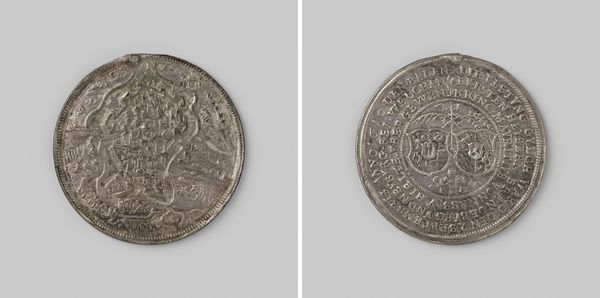
metal, relief, engraving
#
portrait
#
dutch-golden-age
#
metal
#
relief
#
cityscape
#
history-painting
#
engraving
Dimensions: diameter 2.7 cm, weight 6.66 gr
Copyright: Rijks Museum: Open Domain
Editor: This is the ‘Vroedschapspenning van de stad 's-Hertogenbosch’ from 1712 by Theodorus Casparus van Berckel, crafted in metal with engraving in relief. It looks like a coin. What I find particularly striking is how the artist combined the cityscape with allegorical figures. What do you see in this piece? Curator: Well, consider first the very act of minting this ‘penning.’ The metal itself, probably silver, would have been carefully selected and processed. We should explore not only the artist Van Berckel, but also the network of artisans and the system of labor needed to produce such a piece. Who mined the metal? Who smelted it? Each stage reveals a layer of social and economic context often overlooked in traditional art history. Editor: That's fascinating. I hadn't really thought about where the metal came from. So you're saying the material tells a story of labor? Curator: Exactly! This penning isn't just a representation of civic pride, but the embodiment of a complex, material culture. How does understanding that affect your reading of the city it depicts or the figure of Justice shown on the other side? How did this “penning” circulate? Was it commemorative or an object of exchange? The answers to those questions should allow one to see it beyond purely aesthetic appreciation. Editor: That's given me so much to think about. Seeing this penning as an object embedded in a network of labor and consumption really changes my understanding of its historical context. Curator: It challenges us to move beyond just the image and to engage with the means of production and social life ingrained in it. An art object, any art object, does not materialize from thin air.
Comments
No comments
Be the first to comment and join the conversation on the ultimate creative platform.

